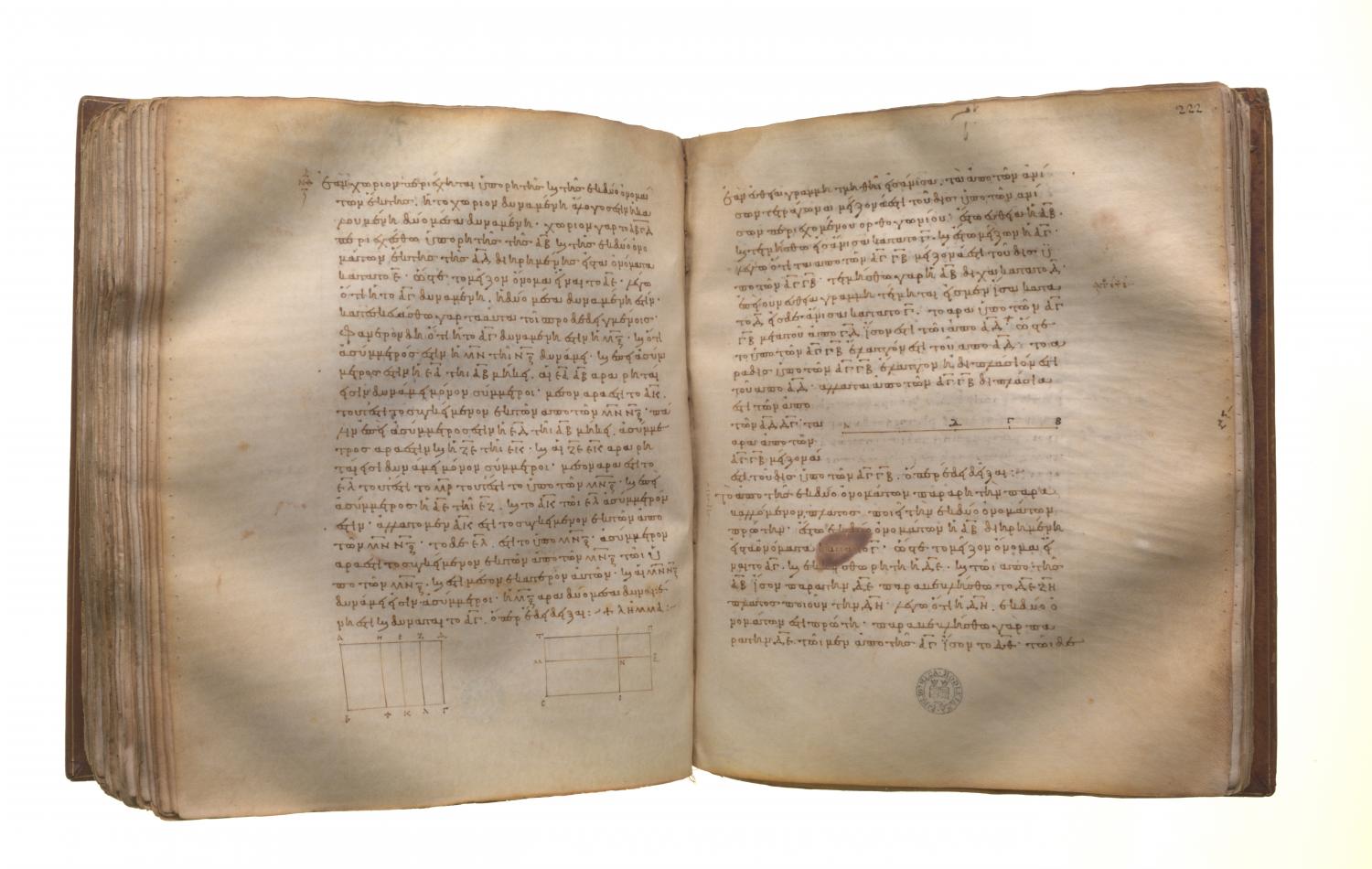Translations
If an area be contained by a rational straight line and the sixth binomial, the side of the area is the irrational straight line called the side of the sum of two medial areas. For let the area ABCD be contained by the rational straight line AB and the sixth binomial AD, divided into its terms at E, so that AE is the greater term; I say that the side of AC is the side of the sum of two medial areas. Let the same construction be made as before shown. It is then manifest that MO is the side of AC, and that MN is incommensurable in square with NO. Now, since EA is incommensurable in length with AB, therefore EA, AB are rational straight lines commensurable in square only; therefore AK, that is, the sum of the squares on MN, NO, is medial. [X. 21] Again, since ED is incommensurable in length with AB, therefore FE is also incommensurable with EK; [X. 13] therefore FE, EK are rational straight lines commensurable in square only; therefore EL, that is, MR, that is, the rectangle MN, NO, is medial. [X. 21] And, since AE is incommensurable with EF, AK is also incommensurable with EL. [VI. 1, X. 11] But AK is the sum of the squares on MN, NO, and EL is the rectangle MN, NO; therefore the sum of the squares on MN, NO is incommensurable with the rectangle MN, NO. And each of them is medial, and MN, NO are incommensurable in square. Therefore MO is the side of the sum of two medial areas [X. 41], and is the side of AC. Q. E. D.[Lemma. If a straight line be cut into unequal parts, the squares on the unequal parts are greater than twice the rectangle contained by the unequal parts. Let AB be a straight line, and let it be cut into unequal parts at C, and let AC be the greater; I say that the squares on AC, CB are greater than twice the rectangle AC, CB. For let AB be bisected at D. Since then a straight line has been cut into equal parts at D, and into unequal parts at C, therefore the rectangle AC, CB together with the square on CD is equal to the square on AD, [II. 5] so that the rectangle AC, CB is less than double of the square on AD; therefore twice the rectangle AC, CB is less than double of the square on AD. But the squares on AC, CB are double of the squares on AD, DC; therefore teh squares on AC, CB are greater than twice the rectangle AC, CB.]
